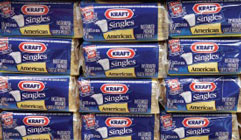Packaging in billion-dollar product recalls
Also, download this story from the electronic issue here
The risk of recalls from packaging errors ranging from defects to contamination can eat away large chunks of profits for food and product manufacturers, says Angelica Buan in this report.
At the heart of the threat of packaging recalls are plastics, being the most widely used materials for packaging. Since the first cellulose-based plastic was introduced in the mid-1880s, strings of discoveries and innovations have harnessed the material’s potential for packaging. Plastics exhibit the strength and barrier properties (to keep food safe and fresh) as well as they are light weight.
Aesthetically, clear plastic not only protects a food product but also allows consumers to see through the packaging. In the home, sealable plastic bags, wraps and containers render longer, fresher shelf life for perishable foods, according to food safety information from the American Chemistry Council (ACC).
The common types of plastic used for packaging, according to UK-headquartered WRAP (Waste & Resources Action Programme), are PET, PE, PP, PS, PVC and PA.
Meanwhile, US-based Plastics Industry Trade Association (SPI) says that plastics enable packaging to provide strength and stiffness, barrier against oxidation, resistance to food component attack, and flexibility; not to mention that it promotes long shelf-life functionalities for both rigid and flexible packaging.
From plant-based beginnings, most plastics used currently are created from chemicals and synthetic materials. For this reason, safety factors for using foodcontact plastics are a serious criterion.
Plastic films in packaging have solicited half-hearted reception from consumers on the basis of their potential to be a health hazard. However, a recent finding by researchers from the Iowa State University (ISU) suggests that while plastics have traces of heavy metals, these do not pose immediate food safety threat. ISU’s food science and human nutrition researcher, Keith Vorst, said, “We found that these metals are in the packaging, but they’re not getting into the food or beverage products.”
Regulatory measures from the US Department of Agriculture (USDA), Food and Drug Administration (FDA), and other similar regulatory bodies, are enforced on plastics, broadening its usage and becoming functional for more food types. Thus, incidences of recalls have not been far behind.

When goods are pulled off the shelves
In the news recently was Kraft Heinz, a North American global food company, that voluntarily recalled select batches of its cheese product on complaints from consumers who choked on the plastic packaging. The firm, newly formed in July this year from the Kraft Foods and Heinz merger, has expunged about 36,000 cases of individually-wrapped cheese slices from the shelves. Based on reports, some portion of the plastic remained stuck to the cheese upon being unwrapped and consumers choked on the left over wrapping.
In 2012, Kraft Foods recalled a batch of its cheese product variety, also for a similar complaint of choking on the plastic packaging. Reportedly, about 27,000 cases of the Jalapeno String Cheese variety were pulled off the shelves across the US, following a complaint that a thin film of plastic adhered to the cheese after being unwrapped.
Meanwhile, US-located parent company of BI-LO, Harveys and Winn-Dixie grocery stores, Southeastern Grocers, has also removed a batch of cheese products based on it containing small pieces of plastic packaging. Some 12-oz packages of the Southern Home Fat Free American singles were removed a few months back from all BI-LO and Harveys stores across some states.
Not just cheese packaging
A potential choking hazard was also reported for baby food pouches sold in 2014. The manufacturer of the affected baby food, Plum Organics, voluntarily recalled some 12,000 cases of the product. It said that the defect along the rim of the plastic spouts may have occurred during manufacturing. The spouts are either fitted with a specially designed spoon for feeding an infant, or alternatively, the baby can suck the food from the pouch. The defective plastic part could potentially be detached and cause choking.
Meanwhile, defective packaging can also cause recalls. Among the commonly reported complaints arising from this is that of consumers finding pieces of plastics in their food products. In 2012, a brand of sponge cake was recalled in the US when it was found to contain fragments of plastic.

The manufacturer Rich Product Corporation voluntarily recalled its quarter Sheet Vanilla Flavoured Pre-Soaked Sponge Cake as a precautionary step. It said that the change in the type of resin used (by the supplier of the plastic packaging) left bits of plastic on the product.
In 2013, UK-based KP Snacks also withdrew multipacks of its McCoy brand chips after plastic pieces were found in the packs. The snack company said that a malfunction at one of the production lines at a plant in the UK had resulted in the contamination.
Faced with a similar incidence was Switzerland-headquartered Nestlé, which in the same year recalled select varieties of its best-seller Chunky Kit Kat, over complaints of plastic fragments found in some of the bars.

This year, some 27,000 kg of sausage products were withdrawn by its Massachusetts-based manufacturer Kayem Foods, and select batches of bran flakes revoked by UK’s retail giants Tesco and Sainsbury's.
These are some of the cases that have brought focus to the safety features of packaging as well as the manufacturing.
Recipe for recall
While innovation in plastics packaging promises safer and stronger functionality, there are no guarantees that nothing can go wrong.
Product recalls are inevitable, as manufacturers are accountable to ensuring safety for their consumers. According to the Ohio State University (OSU) Extension Fact Sheet, a recall of a product is a corrective action against contaminated, adulterated, misbranded or mislabelled products.
Usually, the manufacturer will voluntarily recall the product, or a government agency responsible for the product category would step in by requesting the company to make the recall if the latter has not initiated the step.
While, a recall is not a remote possibility, manufacturers are aiming for zero-recall in the products they send out to the markets. Complying with systems of quality product standards, Good Manufacturing Practices (GMP) and Hazard Analysis Critical Control Points (HACCP) are preventive steps.
A product recall is critical for the company because more than the monetary cost, it could also affect the brand’s image. Corrective action entails destroying, replacing and altering the product, according to the OSU factsheet.
The USDA Food Safety and Inspection Service (USDAFSIS) has three recall classifications: Class I says that the use of the product presents a “reasonable probability to cause serious adverse health consequences or death”. Class II states that there is a “remote probability of adverse health consequences”, from using the product. Class III denotes that the use of the recalled product “will not cause adverse health consequences”
Elsewhere, food standard codes ensure packaging in contact with food is safe. In Australia, for example, standards are enforced such as those embodied by the Australian Standard for Plastic Materials for Food Contact Use to guide the industry on the production of plastic materials for food contact use, referencing, too, the regulations adopted in the US and Europe for the manufacture and use of plastics.
Painful cost of errors
A “plastic choking” case in 2011 involving an organic baby food product packed in a pouch that resulted in a recall had caused its manufacturer, New Zealand-based Green Monkey, an estimated US$1 billion worth of sales loss, as well as marred brand image, according to its Founder/ Director, Charlotte Rebbeck.
The financial impact of recalls is huge, amounting up to billions of dollars for the manufacturers (of recalled product) and depending on the cause of the recall, costs to public health that cannot be monetised.
A recent finding from Swiss Re, a Zurich-based wholesale provider of reinsurance, insurance and other insurancebased forms of risk transfer, notes that the incidences of recalls per year in the US has nearly doubled since 2002. The increase has been influenced by regulatory changes and an increasingly globalised food supply chain, it said.
What challenges food safety is the dynamics of globalised food supply chain, Swiss Re explained. Given the current system of ingredients and technologies being sourced worldwide, this leads to greater complexity for food manufacturers, as well consumer and regulatory demands on companies are continually increasing, the firm added.
More than half of all food recalls cost the affected US companies more than US$10 million each and possible losses of more than US$100 million. Hot on the heels of this figure is the reputational damage that may take a company years to recover from, Swiss Re analysts said.
Amidst the rising recalls in the US and Europe, the American International Group (AIG) launched in 2013 a webbased service called NOVI to help firms estimate the cost of recalls, which could include replacement and destruction costs as well as profit losses from factory closures, government intervention and brand damage.
Free yet confidential, the multi-language service helps qualified food and beverage manufacturers in the US, UK, Germany, Austria, Belgium, Canada, Denmark, Italy, the Netherlands, Spain and Switzerland to manage their risks in the event of recalls.
“Product recalls are an extreme and expensive remedy,” according to a paper on product recalls published online by the US-headquartered legal services firm Carr Maloney. It also advises that “developing a protocol through which to handle product recalls is essential for any manufacturer.”
Being “diligent” in looking out for “triggers” such as customer complaints, test and inspection results, to name a few, must be taken on by the company, said authors, Jan E. Simonsen and Kelly M. Lippincott. “Responsive action is necessary for a recall to be effective and to preserve the brand,” they added.
On the other hand, a recall can be viewed as a means to enhancing packaging quality, which is continually being presented by plastics packaging suppliers to OEMs.
(PRA)Copyright (c) 2015 www.plasticsandrubberasia.com. All rights reserved.









































